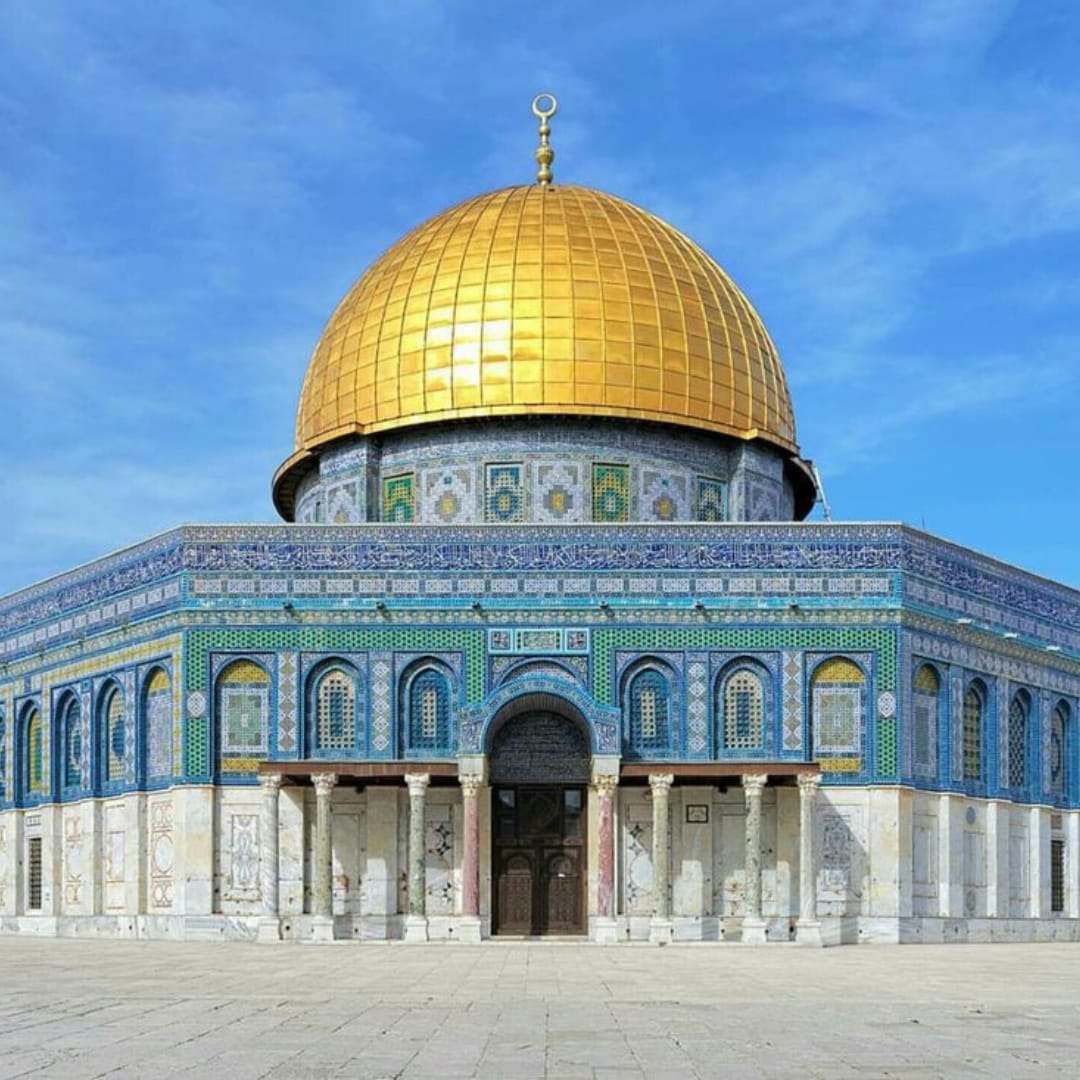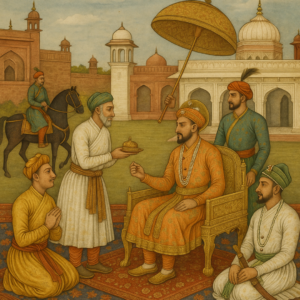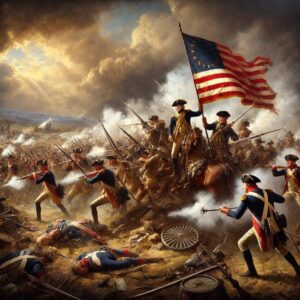Introduction
Palestine is a small region, but it holds a big place in the hearts and minds of millions of people around the world. It’s a land filled with deep history, spiritual meaning, and a long story of struggle and survival. For some, it’s the birthplace of prophets. For others, it’s their homeland—a place where their roots, culture, and family memories go back for generations. When we hear the word “Palestine,” many things come to mind: Jerusalem, a holy city for Muslims, Christians, and Jews; the beautiful olive trees that have stood for centuries; and sadly, the on-going conflict that has brought pain and loss to so many people. For decades, the Palestinian people have lived under occupation, faced wars, and been forced to leave their homes. But despite all this, they continue to stand strong, holding on to their identity, their culture, and their hope for a better future. This article is not just about politics or history—it’s about the people of Palestine. We’ll explore how this ancient land became one of the most talked-about places in the world. We’ll look at its past, from ancient times to the present day, and try to understand why peace has been so hard to achieve. Most importantly, we’ll hear the story of a people who, even in the face of hardship, continue to dream of freedom, justice, and peace. Let’s begin the journey through Palestine—a land of history, struggle, and unshakable resilience.
Historical Background
To truly understand Palestine today, we need to take a step back in time—thousands of years back. The land we now call Palestine has always been important. It has been home to many different people, empires, and cultures. From ancient civilizations to powerful empires, this land has witnessed some of the most important events in human history.
Ancient and Biblical Times
Long before modern borders or nations existed, ancient people called the Canaanites lived in this land. Later, other groups like the Philistines and Israelites made it their home. These ancient communities built cities, traded goods, and practiced their religions. Some of the oldest stories in the Bible and other religious texts happened here. That’s why Palestine holds deep religious meaning for Jews, Christians, and Muslims alike. Jerusalem, in particular, became a sacred city. For Jews, it was the location of the First and Second Temples. For Christians, it’s where Jesus lived, preached, and was crucified. And for Muslims, it’s the home of the Al-Aqsa Mosque, the third holiest site in Islam.
From Islamic Conquest to Ottoman Rule
In the 7th century, Muslim armies entered Palestine, and it became part of the Islamic Caliphate. Over time, it became a peaceful land with a rich mix of cultures and religions living side by side. Then came the Crusades—wars where European Christians tried to take Jerusalem. They captured it for a while, but the famous Muslim leader Saladin won it back. Later, in 1516, Palestine became part of the vast Ottoman Empire. This empire ruled for around 400 years. During this time, Palestine remained a quiet and peaceful place for the most part, with farming villages, busy markets, and religious communities living in relative harmony.
British Mandate and the Seeds of Conflict
After World War I, the Ottoman Empire collapsed, and Britain took control of Palestine under what was called the “British Mandate.” This was a turning point. In 1917, the British government made a promise in the Balfour Declaration to support the creation of a “national home for the Jewish people” in Palestine. At that time, the majority of people living there were Palestinian Arabs—mostly Muslims and Christians. As more Jewish immigrants arrived from Europe, tensions began to rise. Land disputes, political differences, and cultural clashes caused deep divisions. The Palestinians felt they were losing control of their own land. In the 1930s, they revolted, demanding independence and the end of British support for mass Jewish immigration. In 1947, the United Nations came up with a plan to divide Palestine into two separate states—one for Jews and one for Arabs. The Jewish leaders accepted the plan, but the Palestinian Arab leaders rejected it, believing it was unfair and gave away too much of their land. What followed next would change the region forever.
Establishment of Israel and the Nakba
In 1948, a major turning point came in the history of Palestine. On May 14 of that year, Jewish leaders declared the creation of the state of Israel. For Jewish people around the world, it was seen as a moment of hope after the horrors of the Holocaust and centuries of persecution. But for the Palestinian people, it marked the beginning of a deep and painful tragedy—what they call the Nakba, or “catastrophe.” The day after Israel was declared, neighboring Arab countries—Egypt, Jordan, Syria, Lebanon, and Iraq—entered the conflict, hoping to stop the new state and support the Palestinians. What followed was the 1948 Arab-Israeli War, a brutal and chaotic conflict that led to massive changes on the ground. As the fighting spread, hundreds of Palestinian towns and villages were attacked or emptied. In many places, people fled in fear, hoping to return when the fighting was over. In other places, they were forced out by Israeli forces. By the end of the war, over 750,000 Palestinians had been displaced from their homes. They became refugees almost overnight, scattered across neighboring countries like Jordan, Lebanon, Syria, and Egypt. Many still live in refugee camps to this day. At the same time, the new state of Israel was expanding its borders beyond what the UN had originally planned. Around 400 Palestinian villages were destroyed, and many of their names and ruins were erased from maps. Palestinians not only lost their homes but also their lands, their schools, their businesses, and their entire way of life. For those who stayed behind in the newly formed state of Israel, life became difficult. Palestinian citizens of Israel were placed under military rule for many years, facing restrictions on movement and rights. Meanwhile, the refugees waited and hoped to return, but Israel refused to allow them back, claiming it would threaten the Jewish character of the state. The Nakba was not just a one-time event—it left deep wounds that still haven’t healed. For Palestinians, it wasn’t just about losing land; it was about losing the life they knew, being separated from family and roots, and being denied a basic sense of justice. This moment in history continues to shape everything that has happened since. The pain of the Nakba is passed from one generation to the next, and it remains a central part of the Palestinian identity and struggle.
The Palestinian Struggle and Identity
After the Nakba in 1948, the Palestinian people found themselves scattered and divided. Some lived under Israeli rule, others became refugees in foreign lands, and many ended up in the West Bank and Gaza Strip, which were then controlled by Jordan and Egypt. But even though they were separated by borders and politics, one thing kept them connected: the strong desire to return home and live in freedom. In the early years, Palestinians had no official leadership of their own. Their voice in world affairs was weak, and many felt forgotten. But as time went on, the Palestinian identity grew stronger. Songs, poetry, art, and stories helped keep the memory of Palestine alive in refugee camps and homes across the Middle East. By the 1960s, Palestinians began organizing themselves politically. In 1964, the Palestine Liberation Organization (PLO) was formed. It became the main political body representing Palestinians, and its goal was to fight for their rights, including the right to return to their homeland. Later, Yasser Arafat, leader of a group called Fatah, became the head of the PLO. Under his leadership, the world began to hear the Palestinian voice more clearly. Over the decades, Palestinians used many forms of resistance. Some took up arms, while others used peaceful protests, writing, and international campaigns to bring attention to their cause. This resistance wasn’t just about politics—it was about dignity, identity, and the right to live freely on their own land. In 1987, something powerful happened. Palestinians in the West Bank and Gaza launched the First Intifada, or “uprising.” It was a grassroots movement, with people—young and old—protesting Israeli occupation through strikes, boycotts, and civil disobedience. Images of children throwing stones and entire communities standing together touched hearts around the world. The First Intifada showed that the Palestinian people would not remain silent. A second Intifada broke out in 2000, but this one was much more violent. Both Israelis and Palestinians suffered great losses. The violence and heartbreak on both sides made peace seem even farther away. But even during the darkest times, many Palestinians continued to call for nonviolent resistance, justice, and peaceful solutions. Throughout all of this, the Palestinian people have held tightly to their culture and traditions. Despite being refugees, occupied, or under threat, they celebrate their food, their music, their embroidery, and their love for the land. They pass these things on to their children, keeping the Palestinian identity alive even in exile. The Palestinian struggle is not just about borders or politics—it’s a human struggle for freedom, dignity, and belonging. It’s about a people who refuse to give up on their homeland, no matter how long it takes.
Gaza, West Bank, and the Occupation
In 1967, a new and painful chapter began for Palestinians. During the Six-Day War, Israel captured more Palestinian land—the West Bank, East Jerusalem, and the Gaza Strip. Since then, these areas have been under Israeli military occupation. For the people living there, this has meant decades of checkpoints, soldiers, restrictions, and a daily struggle for basic rights.
Life in the West Bank
The West Bank is where millions of Palestinians live, work, and raise their families. But across its hills and valleys, Israeli settlements have been built—neighborhoods created by Israel on land that Palestinians see as their own, and which most of the world considers illegal. These settlements keep spreading, and with them come military roads and checkpoints. For Palestinians, this means everyday life is full of obstacles. Something as simple as visiting family, going to school, or reaching work can require a special permit and hours of waiting at checkpoints. The separation wall, also known as the “apartheid wall” by Palestinians, cuts through cities and villages, dividing communities and even separating people from their own farmland. It’s not just a wall of concrete—it’s a wall that many feel represents injustice and control. Daily life in the West Bank can be very hard. Homes are sometimes demolished, olive trees uprooted, and water and electricity supplies limited. Many Palestinians live under constant threat of raids and arrests. Despite this, they continue to live, work, study, and resist in peaceful and creative ways.
The Situation in Gaza
Gaza is a small, crowded strip of land along the Mediterranean Sea. Since 2007, it has been controlled by Hamas, a Palestinian political and militant group. In response, Israel and Egypt have imposed a strict blockade on Gaza, controlling its borders, sea, and airspace. This has turned Gaza into what many call “the world’s largest open-air prison.” Life in Gaza is extremely difficult. The blockade has crushed the economy, leading to high unemployment, especially among the youth. Electricity often runs for only a few hours a day. Clean water is hard to find, hospitals lack supplies, and families struggle to get by. Gaza has also faced repeated military attacks, which have killed thousands and destroyed homes, schools, and infrastructure. Each time a war ends, people are left to rebuild with very little help. Children grow up surrounded by rubble, trauma, and the sound of drones flying overhead.
The Palestinian Authority and Political Divisions
In the West Bank, the Palestinian Authority (PA) is supposed to govern, but its power is limited. Israel still controls most of the land and resources. Meanwhile, there is a deep political divide between the PA (led by Fatah) and Hamas in Gaza. This split has weakened the Palestinian political front and made it harder to work toward a united future. Despite all of this, Palestinians in both Gaza and the West Bank continue to hold on to hope. They raise their children with dreams of peace, dignity, and freedom. Their resilience shines through in schools, art, poetry, and community life, even when the world seems to turn its back.
International Involvement and Peace Efforts
The story of Palestine is not just a local or regional issue—it has long drawn the attention of the entire world. Over the years, many countries, leaders, and international organizations have tried to solve the conflict and bring peace to the region. But despite dozens of meetings, plans, and promises, a just and lasting peace remains out of reach.
The Role of the United Nations
After World War II, the United Nations (UN) played a key role in the history of Palestine. In 1947, it proposed the plan to divide Palestine into two states—one Jewish and one Arab. This plan was accepted by Jewish leaders but rejected by Palestinian Arabs who felt it was unfair. Ever since, the UN has passed many resolutions calling for peace, the end of occupation, and the right of Palestinians to return to their homes. The UN also provides humanitarian support through its agency called UNRWA (United Nations Relief and Works Agency). This agency helps millions of Palestinian refugees with food, schools, and health care. However, in recent years, funding for UNRWA has faced major cuts, leaving many families in a difficult situation.
U.S. Involvement
The United States has been one of the most influential players in the conflict. It gives billions of dollars in aid to Israel and has often supported Israeli policies, including at the United Nations. While the U.S. has also tried to act as a peace broker—especially during the 1990s peace talks—many Palestinians believe it is not a neutral party. Under different American presidents, peace plans have been proposed, such as the Oslo Accords in the 1990s and the Trump administration’s “Deal of the Century.” Some of these plans offered hope, but most failed to address the core Palestinian demands: ending the occupation, stopping illegal settlements, and allowing refugees the right to return.
European and Arab Countries
European countries often speak about the need for a “two-state solution,” where both Israel and Palestine can live side by side in peace. They send humanitarian aid and sometimes pressure Israel to follow international law, but they rarely take stronger actions to enforce those demands. Arab countries once stood strongly with Palestine, especially during the earlier wars. Over time, however, many have shifted their focus. In recent years, some Arab states, like the United Arab Emirates, Bahrain, Morocco, and Sudan, have normalized relations with Israel through the Abraham Accords—without any solution for the Palestinian issue. This left many Palestinians feeling abandoned and disappointed.
People’s Movements and Global Solidarity
While governments often fall short, ordinary people around the world have shown great solidarity with Palestine. Movements like Boycott, Divestment, and Sanctions (BDS) call for peaceful pressure on Israel to follow international law. Activists, students, artists, and human rights groups continue to raise their voices in support of justice for Palestinians. Social media has also given Palestinians a way to share their own stories, in their own words, with a global audience. From videos of daily life under occupation to stories of hope and resistance, the world is hearing more directly from the people living this reality.
Human Rights, Resistance, and Daily Life
Living in Palestine today means facing daily challenges that touch almost every part of life. The conflict, occupation, and political divisions create hardships—checkpoints slow movement, homes face demolition, and families struggle with limited access to water, electricity, and healthcare, especially in Gaza. Yet, Palestinians meet these struggles with remarkable strength. Farmers still care for olive trees passed down through generations, children keep studying with dreams of a better future, and communities hold on to traditions like cooking maqluba, dancing the dabke, and gathering for weddings and festivals. Artists, poets, and musicians share stories of hope, while peaceful protests and local initiatives keep the spirit of resistance alive. Even in refugee camps, people build schools, clinics, and cultural centers, proving that life in Palestine, despite the hardships, is still rich with community, history, and unshakable pride.
The Future of Palestine: Challenges and Hopes
The future of Palestine is uncertain and full of challenges, yet it is also rich with hope and the unshakable spirit of its people. The ongoing Israeli occupation of the West Bank, the blockade of Gaza, and the steady expansion of settlements make it difficult for Palestinians to move freely, control their own resources, or build a stable future. Political divisions between the Palestinian Authority in the West Bank and Hamas in Gaza weaken unity, while millions of refugees remain scattered in camps or exile, still longing to return home. International peace efforts move slowly, and some countries have shifted attention elsewhere, leaving many Palestinians feeling forgotten. Yet around the world, awareness and solidarity grow, with new generations speaking out for justice. In the face of these hardships, Palestinians hold tightly to their culture, education, and dreams—believing in peaceful resistance, community strength, and the hope that one day they will live in freedom and dignity. No matter what the future holds, their courage and determination remain unbroken.




Pingback: The Cold War